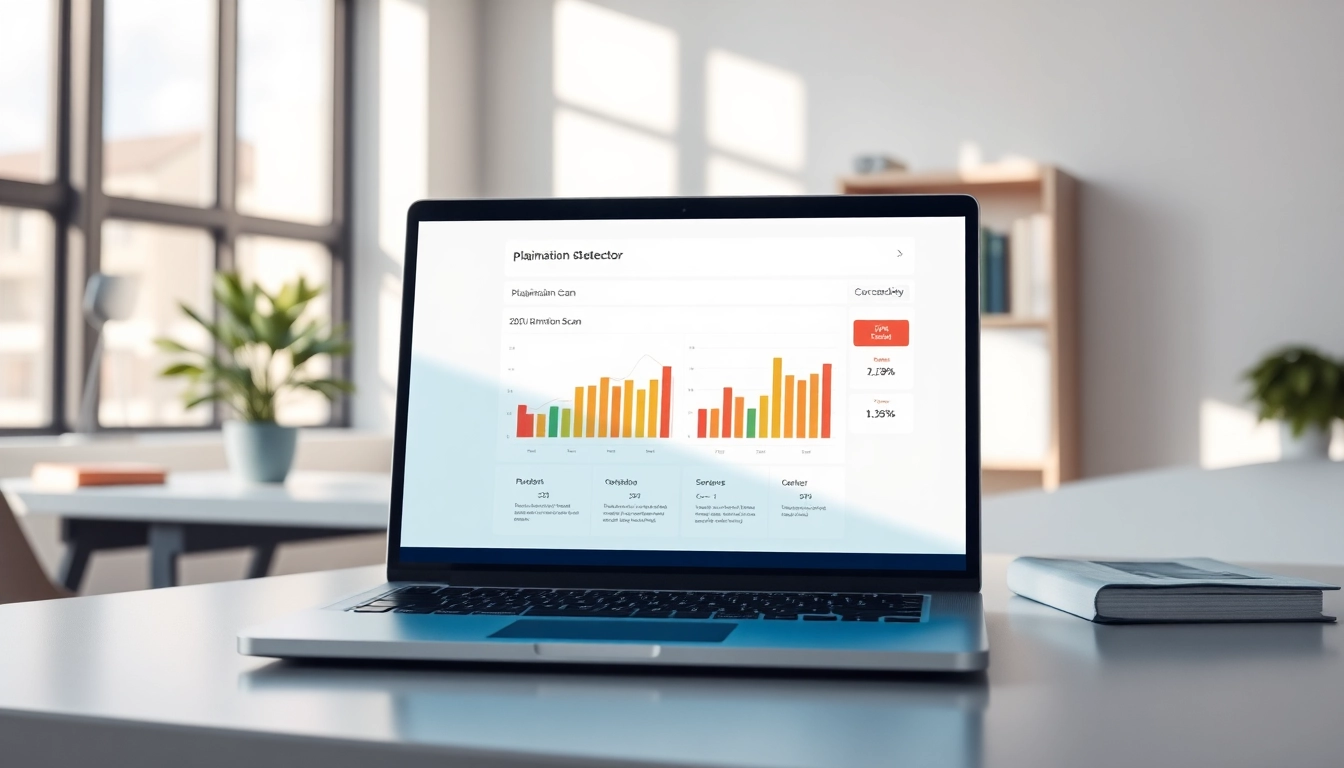Understanding Telephone Data Collection
What is Telephone Data Collection?
Telephone data collection is a methodological approach used primarily in research to gather information from respondents over the phone. It involves the systematic process of contacting individuals, usually selected randomly or based on specific criteria, to solicit their responses to structured or semi-structured questionnaires. The effectiveness of this method hinges on its ability to reach diverse populations quickly and cost-effectively, leveraging established communication infrastructures to obtain valuable data insights.
In its core, telephone data collection uses tools like Computer-Assisted Telephone Interviewing (CATI) that enable researchers to automate the data entry process while maintaining an interactive session with the interviewee. By combining technology with personal interaction, this approach helps bridge the gap between qualitative insights and quantitative data collection.
Essentials of Telephone Surveys
Telephone surveys are a significant aspect of telephone data collection. They play a vital role in various fields such as market research, public opinion polling, and social research. Essential components of telephone surveys include:
- Structured Questionnaires: These are pre-defined sets of questions designed to elicit specific information from respondents. They can vary from closed-ended questions, which limit responses to predetermined options, to open-ended questions, allowing respondents to share their thoughts in their own words.
- Sampling Technique: Effective sampling is crucial to ensure representativity. Random sampling, stratified sampling, and quota sampling are popular techniques employed to ensure various population segments are included.
- Interviewer Training: The quality of data collected is heavily dependent on the interviewer’s ability. Proper training ensures interviewers understand the questionnaire, can build rapport with respondents, and manage different response scenarios effectively.
- Technology Utilization: Utilizing CATI systems not only streamlines the data collection process but also enhances the capacity for real-time data analysis and minimizes human error during data entry.
Benefits of Using Telephone Interviews
Telephone interviews boast numerous advantages that make them essential for effective data collection:
- Cost-Effectiveness: Compared to face-to-face interviews, telephone interviews generally require lower costs associated with travel, time spent, and logistical arrangements.
- Increased Reach: Telephone surveys can access a wide geographic area, allowing for the inclusion of respondents from remote locations that may be difficult to reach through other methods.
- Speed of Data Collection: Telephone data collection can often be conducted more quickly than other methods, allowing researchers to gather large volumes of data within a tight timeframe.
- Flexibility: Researchers can quickly adapt questions or probes based on respondents’ answers, facilitating richer data collection.
Methods and Techniques of Data Collection
Types of Telephone Surveys: CATI vs. Other Methods
While telephone data collection predominantly utilizes CATI, other methods also exist. Understanding these can help determine the best approach for specific research needs:
- Computer-Assisted Telephone Interviewing (CATI): This method employs computer software to guide the interviewer through the questioning process, aiding in data entry and enhancing consistency across interviews.
- Voice Response Surveys: Automated systems call respondents using pre-recorded messages and allow them to respond using their phone keypad. This method is efficient but may lack depth due to the absence of personal interaction.
- Traditional Telephone Surveys: Involves live interviewers conducting surveys without the aid of computer technology. This approach can provide more nuanced insights but can be slower due to the manual data collection process.
Best Practices for Telephone Interviewing
To maximize the effectiveness of telephone data collection, researchers should adopt best practices such as:
- Pre-Test and Pilot Surveys: Conducting pilot tests helps identify potential issues in the questionnaire and interviewer performance.
- Maintain a Neutral Tone: Interviewers should adopt a neutral and professional tone to avoid leading respondents in a particular direction.
- Respect Privacy: Assure respondents their information will be treated confidentially and explain the purpose of the survey upfront.
- Proper Scheduling: Schedule calls at convenient times for respondents to maximize participation rates.
Common Challenges and Solutions in Data Collection
Despite the benefits of telephone data collection, various challenges can arise. Here are common issues and potential solutions:
- Low Response Rates: Solution: Employ mixed-method approaches, such as combining phone calls with online surveys or incentivizing participation.
- Respondent Fatigue: Solution: Keep interviews concise and to the point while ensuring they remain engaging to maintain interest.
- Technological Issues: Solution: Ensure the reliability of technology and train interviewers to troubleshoot common problems during calls.
Implementing Effective Telephone Surveys
Step-by-Step Guide to Conducting Telephone Surveys
Implementing a successful telephone survey involves a sequence of clear steps:
- Define Objectives: Identify the primary research questions and objectives the survey intends to address.
- Design the Questionnaire: Develop a well-structured questionnaire that aligns with research objectives.
- Select the Sample: Choose an appropriate sampling method based on the desired representation of the target audience.
- Train Interviewers: Provide comprehensive training on the questionnaire and effective interviewing techniques.
- Pre-Test the Survey: Conduct pilot tests to identify areas needing adjustment before rolling out the full survey.
- Execute the Survey: Launch the survey, ensuring technicians are available to troubleshoot and assist interviewers as needed.
- Analyze Data: Post-collection, analyze and interpret the data using appropriate statistical techniques.
- Report Findings: Prepare a comprehensive report summarizing the findings and insights derived from the research.
Crafting Effective Survey Questions
Effective survey questions are fundamental to gathering valid data. Consider these principles when crafting your questions:
- Clarity: Use clear and concise language to avoid confusion.
- Relevance: Ensure every question is pertinent to the survey’s objectives.
- Balanced Choices: Provide balanced response options, especially for rating-scale questions.
- Avoid Leading Questions: Frame questions in a way that does not sway respondents toward a preconceived answer.
Utilizing Technology for Better Outcomes
Technology plays a transformative role in telephone data collection, enhancing both efficiency and response rates:
- Data Management Software: Implement robust data management tools to organize and store collected data securely.
- Predictive Dialing Systems: These tools help automate the dialing process, reducing the time interviewers spend waiting for respondents to answer.
- Voice Recording Technology: Recording interviews (with prior consent) can help in data verification and improve data quality through careful review.
Analyzing and Interpreting Data
Data Analysis Techniques for Telephone Surveys
After data collection, employing appropriate data analysis techniques ensures accurate interpretation:
- Descriptive Statistics: Use these to summarize data, providing insights into response distributions and averages.
- Inferential Statistics: Techniques like regression analysis can help identify relationships among variables.
- Qualitative Analysis: For open-ended responses, thematic analysis can help uncover underlying themes within qualitative data.
Interpreting Results: What the Data Tells Us
The insight derived from analyzing your survey data can lead to actionable knowledge. Essential aspects include:
- Understanding Significance: Assess statistical significance to identify whether observed trends are likely to occur by chance.
- Contextual Interpretation: Compare findings against existing literature or benchmarks to draw relevant conclusions.
Reporting Findings from Telephone Research
Effectively reporting research findings is critical for stakeholder engagement. Key components of a well-structured report include:
- Executive Summary: Provide an overview of the main findings and implications.
- Detail Methodology: Elaborately describe the methods used for data collection to establish credibility.
- Visual Data Representations: Utilize charts, graphs, and tables to present data intuitively.
- Conclusions and Recommendations: Offer clear conclusions based on the data analysis and actionable recommendations for stakeholders.
Trends and Future of Telephone Data Collection
Emerging Trends in Telephone Data Collection
The field of telephone data collection is evolving, showcasing several emerging trends:
- Shift to Mobile Devices: With the increasing prevalence of smartphones, surveys created specifically for mobile platforms are becoming more common.
- Integration of Social Media Data: Combining telephone surveys with social media analytics can provide a more comprehensive view of public sentiment.
- Artificial Intelligence: Implementing AI can enhance predictive analytics to improve respondent targeting and question optimization.
The Impact of Mobile Technology on Surveys
Mobile technology is reshaping survey methodologies through enhanced accessibility and convenience:
- Increased Accessibility: Surveys can now reach respondents through their mobile devices, thus expanding the potential participant pool.
- Real-Time Data Collection: Mobile technology allows for the immediate entry and analysis of data, enabling quick adjustments and live feedback.
Future Challenges and Adaptations in Telephone Research
As the landscape of data collection transforms, researchers should be aware of upcoming challenges:
- Respondent Engagement Struggles: As privacy concerns grow, researchers will need to innovate ways to engage respondents without breaching their privacy expectations.
- Data Security Regulations: Adapting to increasingly stringent data protection laws will require updated practices and technologies.
- Maintaining Response Rates: Harnessing the strengths of multiple data collection methods will be essential to maintain engagement and response rates.



